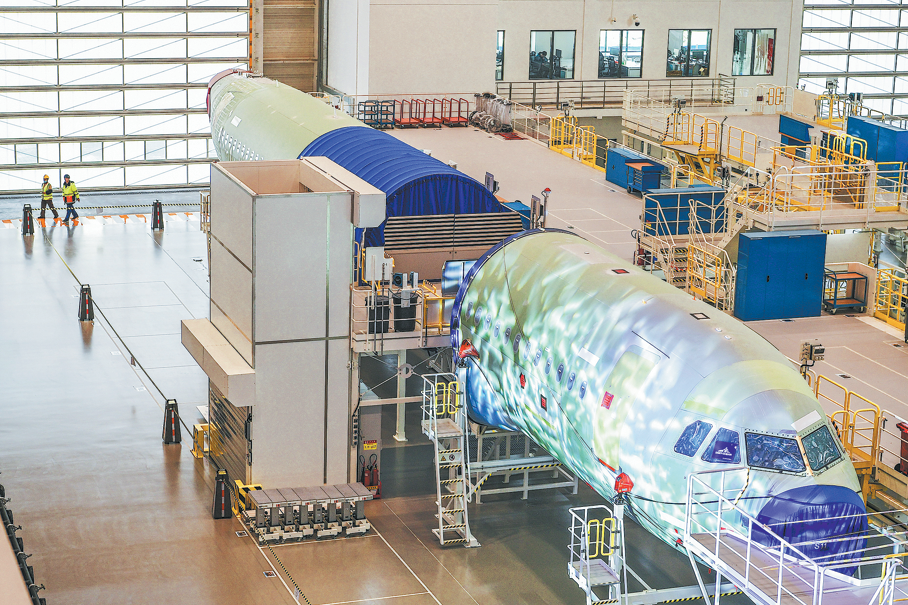Technology catching up with dreams of reaching for the sun

The old joke was that a competing space program announced plans to surpass all other countries in the space race by going for the biggest prize of all — landing on the sun. But the sun is so hot, the spokesman was asked, things burn up before they can get near.
Aha, the spokesman said triumphantly, we're going at night!
The dream to get a closer look at our star has been with scientists ever since the Sputnik era.
Now a NASA spacecraft is hurtling toward the sun equipped to get closer than any object has been before, thanks to a newly developed carbon heat shield and high-tech innovations, The Associated Press reports.
If all goes as planned, the Parker Solar Probe will pass Venus in October and fly straight through the wispy edges of the sun's corona, or outer atmosphere, in November. In the years ahead, it will close within 3.8 million miles of the surface two dozen times over its seven-year, $1.5 billion mission.
"Wow, here we go. We're in for some learning over the next several years," said Eugene Parker, the 91-year-old astrophysicist for whom the spacecraft is named.
Parker accurately theorized 60 years ago about the existence of solar wind — the supersonic stream of charged particles blasting off the sun and coursing through space, sometimes wreaking havoc on electrical systems on Earth.
This is also the first time NASA has named a spacecraft after someone who is still alive.
The Parker probe is about the size of a subcompact automobile and weighs under a ton. Parker and thousands of others watched a 23-story Delta IV Heavy rocket thunder into the clear, star-studded sky on three pillars of fire that lit up night.
NASA needed a third stage to reach the sun, which is 93 million miles away.
It was the first rocket launch ever witnessed by Parker, a retired University of Chicago professor.
"I really have to turn from biting my nails in getting it launched, to thinking about all the interesting things which I don't know yet and which will be made clear, I assume, over the next five or six or seven years," Parker said on NASA TV.
Key mysteries they hope to solve: Why is the corona hundreds of times hotter than the 10,000-degree Fahrenheit surface? And why, as Parker theorized in 1958, is the sun's atmosphere continually expanding and accelerating?
"The only way we can do that is to finally go up and touch the sun," said project scientist Nicola Fox of Johns Hopkins University. "We've looked at it. We've studied it from missions that are close in, even as close as the planet Mercury. But we have to go there."
The Parker probe will start shattering records this fall. On its very first brush with the sun, it will come within 15.5 million miles, easily beating the current record of 27 million miles set by NASA's Helios 2 spacecraft in 1976.
By the time Parker gets to its 22nd, 23rd and 24th orbits of the sun in 2024 and 2025, it will be even deeper into the corona and traveling at a record 430,000 mph. Nothing from planet Earth has ever gone that fast.
Even Fox has difficulty comprehending the mission's derring-do.
"To me, it's still mind-blowing," she said. "Even I still go, 'Really? We're doing that?'"
The 8-foot heat shield will serve as an umbrella that will shade the craft's instrumentation, with on-board sensors adjusting the shield when necessary, so nothing gets fried.
A mission to get up close and personal with our star has been on NASA's books since 1958. The trick was making the spacecraft compact and light enough to travel at incredible speeds and durable enough to withstand the punishing environment.
"We've had to wait so long for our technology to catch up with our dreams," Fox said.
Contact the writer at chrisdavis@chinadailyusa.com
Today's Top News
- Scholars warn US threatens global legal order
- UN chief warns of global chaos as US prioritizes power over intl law
- China to formulate plan on expanding domestic demand for 2026-2030
- Xi congratulates Central African Republic president on reelection
- Civil aviation readies for record rush
- Food can be re-engagement recipe for Beijing, Ottawa






























